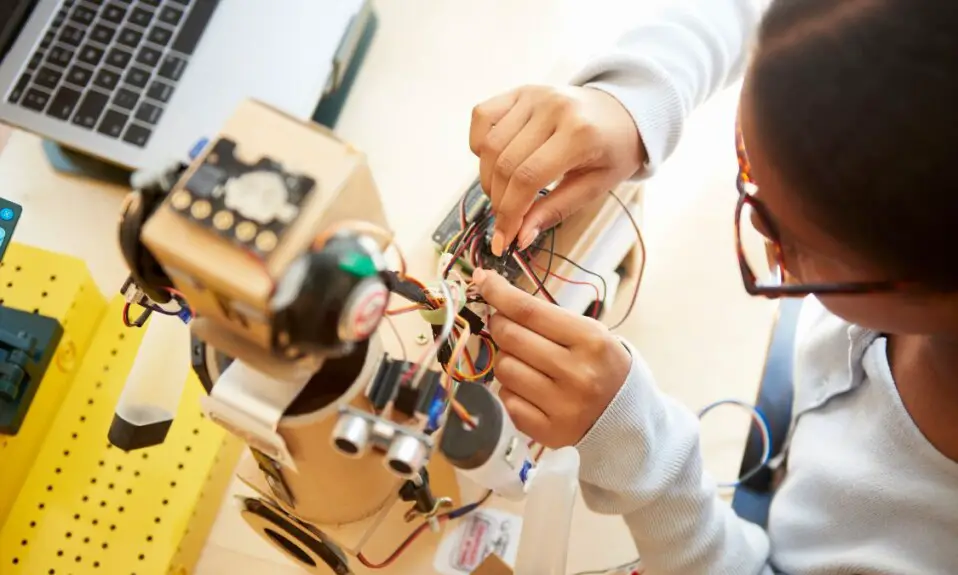
Today we’ll share our knowledge in the field of robotics with you. These days, robotics is gaining popularity faster than anything, even robotics are taught in schools. Robotics is a major fields that deals with how robots work in various industries. Robotics are becoming more and more popular because they are beneficial almost everywhere.
We can use robots in medicine, engineering, space research, home care, and more. However, the structure and programming of robots change with the fields. So, today we will discuss; the top five major fields of robotics.
Top 5 Major Fields of Robotics
In robotics, there are many fields. Here we have listed the top 5 major files of robotics. So, let us discuss them one by one.
1. Operator Interface
The operator interface is the most important field of robotics. We will describe; the reason behind this. A robot must have the ability to communicate with humans. Without effective communication, a user can’t control the robot. Also, if the robot can’t communicate, it will not follow the instructions accurately.
Here operator interface comes into play. It is the medium that allows communication between the user and the robot. So, by this interface, a human can give commands to a pre-programmed robot. Let’s clear this with a real-life example. A gaming controller is a perfect example of a human-robot interface (HRI).
It allows the user to provide a set of commands to the system. Also, it takes that command to execute those in the game. The operator can provide commands to the conveyor or other devices to execute on the factory floor. So, the operator interface is a sensitive part of robotics. You have to deal with great care to deal with it.
Also, the operator interface has some different levels. The simplest form is a button and switches that are directly connected to the system. The next level is graphics operator panels, the electric device to run a file on your PC. The most advanced level operator interfaces are the computers having larger memory capacity.
2. Mobility or Locomotion
To complete tasks, sometimes a robot needs movement. Especially when you are using the robot in industries, it needs a lot of movement. In robotics terms, we call this movement – locomotion. A robot achieves its mobility in different ways. Some robots are designed based on human anatomy.
The purpose of these robots is to minimize human efforts. So, they mimic human movements to perform the tasks. On the other side, flying robots and drones use propellers and other instruments. They need to fly and go through the air to complete their tasks. Also, there are some robots with wheels.
The robots we send to the moon, Mars, and other celestial bodies, use wheels for their movement. So, the environment and requirements determine the movement of a robot. So, the engineers have to design the robot according to its requirements.
Also, the programmers have to program the robot to fulfill the requirements. All these things fall under the field of locomotion. So, it is one of the major fields of robotics for study and work.
3. Manipulator and Effectors
As we have mentioned, robots have to interact with the environment for functional tasks. Here, manipulators and effectors come into play. These allow robots to pick up objects and move them according to the command.
Also, it helps the robot – manipulate items that are separate from the system. Human-like robots will use appendages that are similar to a human hand.
In industrial settings, manipulators and effectors mostly represent pinchers, claws, or pushes. These are effective and suitable for moving heavy objects.
So, you can understand the manipulator and effectors. This is equally important as mobility and interaction. So, we can consider it, one of the major fields of robotics.
4. Programming
When we are talking about major fields of robotics, we can’t ignore programming. Programming refers to the language an operator uses to communicate with the robot. Traditionally, developers used robot programming to determine the task of the robot. These days, programming languages have become advanced much more.
Now, programming allows robots to learn and adapt to changes in the environment. This is indeed a remarkable feat of science and engineering. There are two options for the programming of the robots. Generally, users can give commands in real-time to operate the robots. Or, the developers set up some programs for the robot to perform a series of tasks.
Whatever the strategy is, a developer has to deal with thousands of programming languages. Robotic programming is a huge part of robotics having so many programming languages. To become an efficient programmer, you must have specialization in one or more languages. Also, there are three types of robot programming.
These are joint-level programming, robot-level programming, and high-level programming. Joint-level programming allows the robot to perform basic actions and positions using the joints. Robot-level programming is useful for performing tasks as a whole. High-level programming establishes the relation between the parts of the robot. So, you can understand the importance of programming from the above discussion.
5. Sensing and Perception
Robots use sensors to gather data from the surrounding environment. These help the robots to interact with their surroundings to hold their position. The robot can understand the physical space it occupies and where it needs to go.
Also, these sensors help the robot for detecting obstacles in its path. Perception helps to analyze the data from the surroundings. Together they help the robot to decide how to react to the object encountered. So, sensation and perception are important to control the accurate movement and function of the robot.
Especially when we consider the robot with wheels, the detection of obstacles is mandatory. That’s why we have placed it in the major field of robotics. The selection of the right sensors is necessary to ensure the correct movements of the robot.
Conclusion
So, we have mentioned the major fields of robotics. Also, there are some other fields that you should consider for robot dealing. To build a fully functional robot, you have to consider all of them. Proper incorporation ensures maximum effectiveness and saves the robot from glitches. Robotics has a light future, so it is the perfect time to jump into it.









